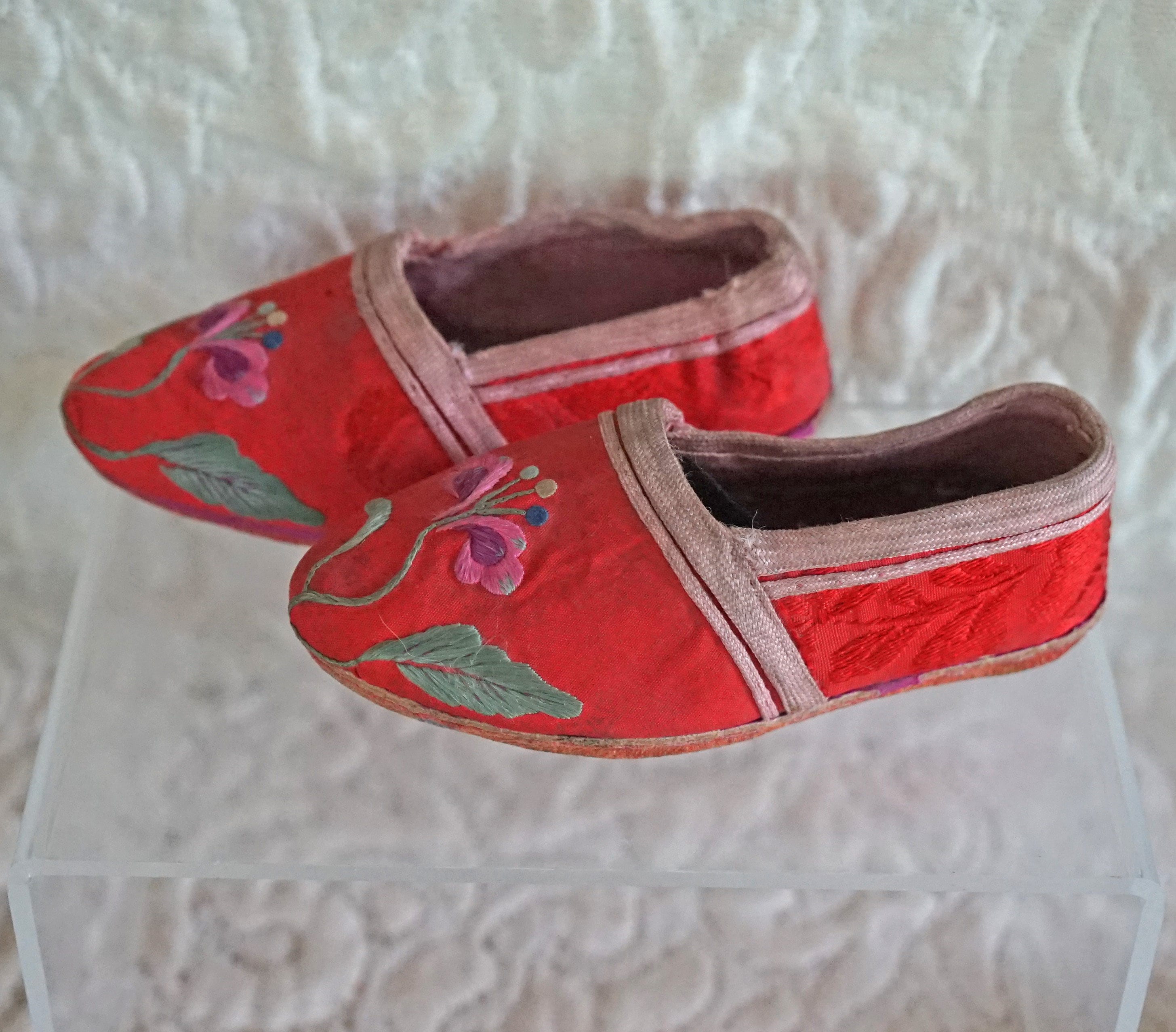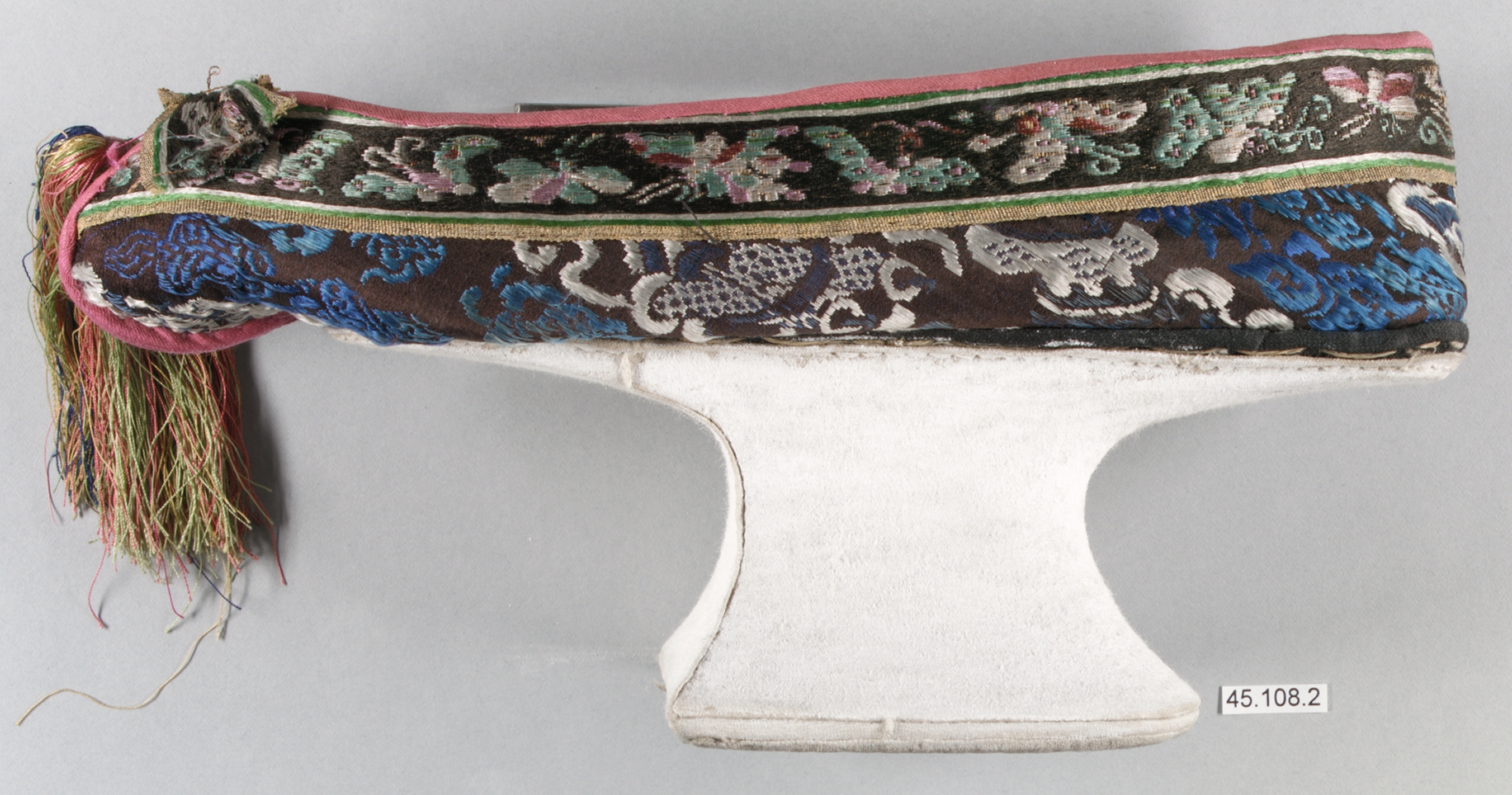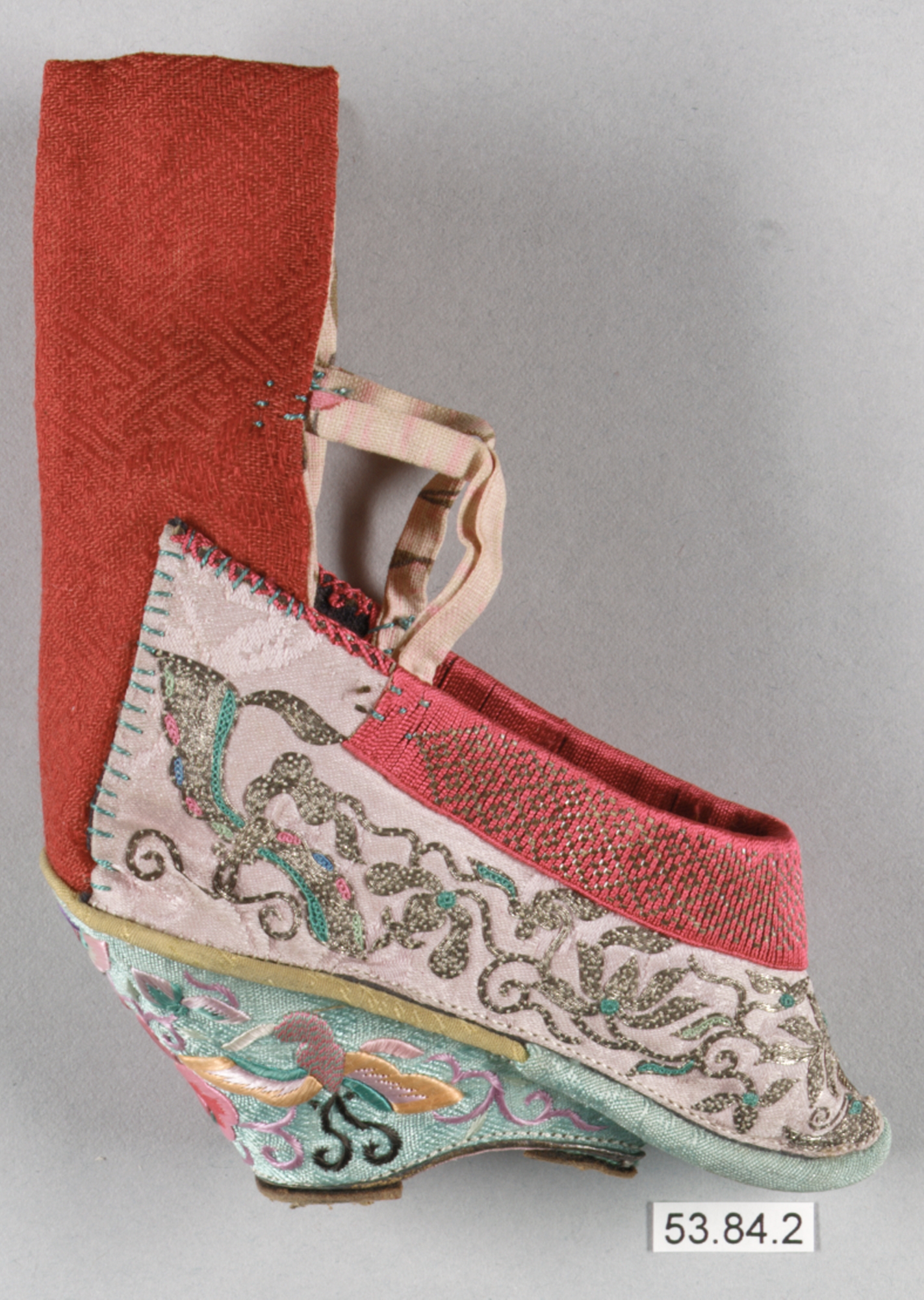Woman's Shoe China Qing dynasty (16441911) The Metropolitan Museum of Art
Qing Dynasty clothing, referring to the costumes & dress of the Qing Dynasty (1636-1912). The Qing Dynasty was the last feudal dynasty in China's history,. In the Ming Dynasty, men kept their hair in a bun, wore loose clothes, long socks, and shallow shoes; in the Qing Dynasty, they shaved their hair and left it in a braid that hung behind.

Antique Chinese Lotus Shoes Late Qing Dynasty Etsy
During the Qing Dynasty (1644B.C-1911B.C), the men's shoes were mainly led by the pointed shoes, which were made of brocade during summer and autumn, while made of silk fabrics during the winters.

Manchu Woman's Shoe China Qing dynasty (16441911) The Metropolitan Museum of Art
Qin dynasty Lü (履) or Xie (鞋) Xieqiao (鞋翘) or Yuntouxie (云头鞋) Curled up Shoe Some ancient Chinese shoes had curled up-shoes, i.e. shoes with rising toe caps, and could come in different shapes, such as tiger heads and phoenixes. [1] Han - Unknown Cailu (草履)

Woman's Shoes Qing dynasty (1644'1911), 19th century China. Blue and red sateen, gilt trim
One Shoe in a Pair of Han Woman's Bound Foot Shoes, Late Qing Dynasty (1840-1911) This tiny, embroidered silk shoe was for a Han woman. There was a very old tradition of binding the feet of upper class Han women starting when they were infants. The feet were bound in order to deform their growth. This hideous process also involved breaking.

ancient embroidered shoes for women chinese embroidered shoes chinese qing dynasty princess
Manchu Style Manchu Style The Manchu established the Qing government in 1644. Manchu people expressed their distinct culture, language, and nomadic cultural roots through their dress. To standardize and signify the different classes, the Manchu government created a visual language through the medium of clothing.

Woman's Shoe for Bound Feet China Qing dynasty (16441911) The Metropolitan Museum of Art
Chinese Qing Dynasty Style Waistcoat, Shoes for 1/6 Scale Doll Only / Art / Decoration / Guarantee authentic (1.4k) HKD 371.08. Add to Favorites Chinese Flowerpot shoes of Qing Dynasty for 1/6 Scale Doll / Art /Decoration / Guarantee authentic (1.4k) HKD 145.90. Add to Favorites.

A pair of Chinese embroidered silk bound feet shoes, late Qing Dynasty, circa 1900, in
Qing Dynasty Shoes (1 - 34 of 34 results) Price ($) Shipping All Sellers Chinese Qing Dynasty Style Waistcoat, Shoes for 1/6 Scale Doll Only / Art / Decoration / Guarantee authentic (1.4k) $45.68 Antique Chinese Embroidered Qing Dynasty Children's Shoes, Collectibles (1.5k) $95.00 Men Hanfu Shoes by Hanfu Story | Boots | Chinese Traditional Shoes

Empress Photo Chinese clothing, Historical shoes, Qing dynasty
The Qing Dynasty (1644 - 1911). A Qing Dynasty pair of Manchu 'horse-hoof' shoes. During the Qing Dynasty in China the Manchu women were forbidden from binding their feet. The 'horse-hoof' shoe was not only fashionable among Manchu women, but also made them appear taller; the shoe reshaped the body. Together with the

Flowerpotsole shoes in the Qing Dynasty, Forbidden City collection. Chinese shoes, Historical
Porcelain-made lotus shoes began being made by imitating the embroidered shoes for the appreciation of male scholars. The shoes not only revealed the multiple ceramic techniques that were popular in the Qing Dynasty, but also exposed the spiritual and aesthetic appeal men had for the shoes (and the feet they produced) disassociating themselves.

19th Century Qing Dynasty Manchu Red Silk Embroidered Shoes or Etsy
Qing dynasty (1644-1911) / Republic Period (1912-1949), early 20th century Manchu China Status Currently Off View Department Textiles Culture Manchu Title Woman's Shoes Place China (Object made in) Date Made 1901-1925 Medium Silk, satin weave, with needlework Dimensions

Chinese Qing Dynasty Hand Embroidery Madam Shoes
From Wikipedia, the free encyclopedia Shoes for a Manchu noblewoman, China, Qing dynasty, mid 1800s AD, silk, wood; from the Textile Museum, George Washington University.

qing dynasty emperor shoes qing emperor shoes han dynasty emperor shoes with dragon foot health
The Qing dynasty (1644-1911), the last empire in Chinese history, was ruled by the Manchus, a nomadic group that came from the north. Much of what we know today as Chinese material culture developed during this period.

Chinese Shoe Culture (III) Amazing Women’s Shoes of the Qing Dynasty Interact China
Manchu Woman's Shoe. China. late 19th-early 20th century Not on view. Manchu Woman's Shoe. Period: Qing dynasty (1644-1911) Date: late 19th-early 20th century. Culture: China.. "The Manchu Dragon: Costumes of the Ch'ing Dynasty (1644-1912)," December 16, 1980-August 30, 1981. Learn more about this artwork. Timeline of Art.

The collection of Chinese clothing from the Qing Dynasty National Museum in Krakow
Qing dynasty, the last of the imperial dynasties of China, spanning the years 1644 to 1911/12. Under the Qing the territory of the empire and its population grew significantly, many of the non-Chinese minorities within the empire were Sinicized, and an integrated national economy was established.

Manchu high platform shoes, Qing Dynasty, Forbidden City collection (probably worn by the
Period: Qing dynasty (1644-1911) Date: 19th-20th century Culture: China Medium: Silk, satin, leather, metallic thread Dimensions: 4 x 9 in. (10.16 x 22.86 cm) Classification: Costumes-Embroidered Credit Line: Gift of Louise C. Thomas, 1953 Accession Number: 53.84.3 Learn more about this artwork Asian Art at The Met

Chinese Qing Dynasty Lotus Shoes Sage & Leaves
Provenance Lolita Sheldon Armour [Mrs. J. Ogden Armour, died 1953], Chicago and Lake Forest, IL, by 1933 [Incoming permanent receipt R5419, Sept. 18, 1933]; given to the Art Institute of Chicago, 1933. Object information is a work in progress and may be updated as new research findings emerge.